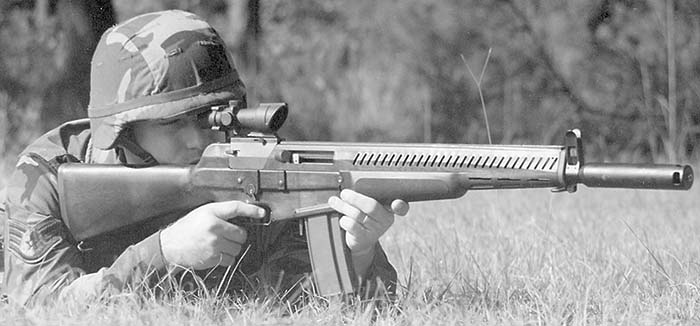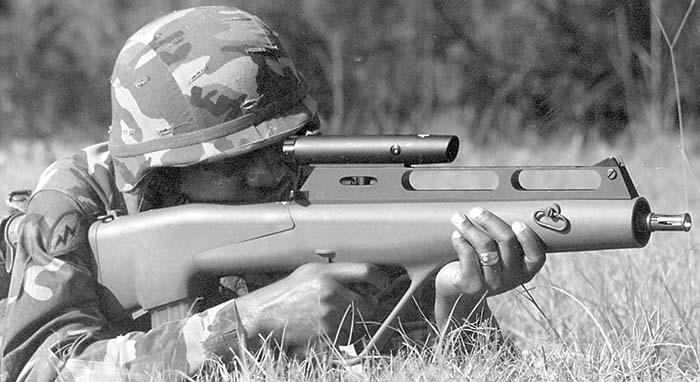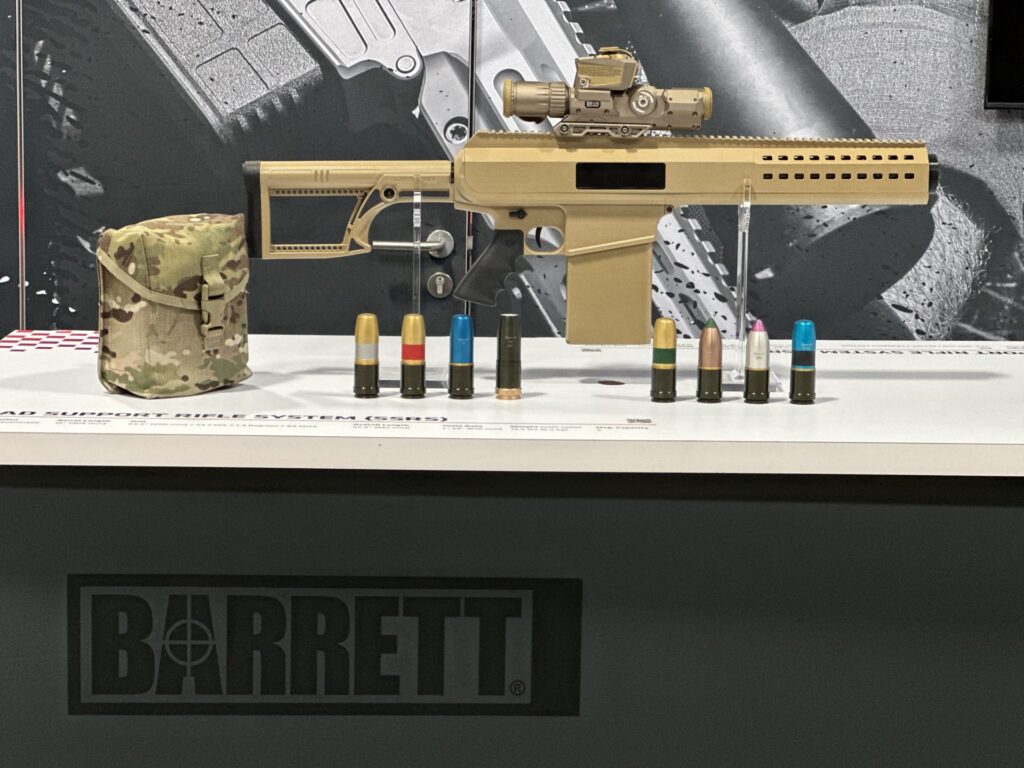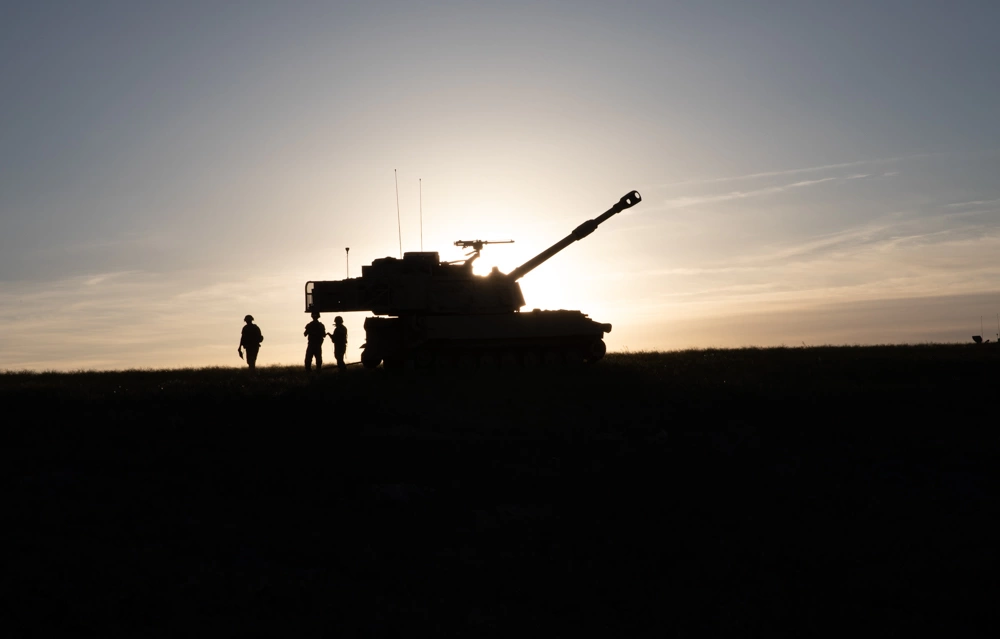The ACR program or how the Army spent 300 million dollars on nothing
- By Travis Pike
Share This Article

The service life of the M16 and its descendants is unparalleled. Throughout M16’s life, numerous programs attempted to replace it – but none succeeded. One of the most interesting was the Army’s ACR, or Advanced Combat Rifle, program. Unlike other programs, the goal of the ACR program was rather open-ended allowing arms manufacturers to come up with some fascinating designs.
The ACR program can be traced back to 1980 when the U.S. House Committee on Armed Services asked the Joint Service Small Arms program to conduct a study on the M16A1 and find out if it was still a competent rifle and the best choice for the military.
The study found that the M16A1 was great, but could be improved. The U.S. Army latched onto this phrase and began to plot and plan. It eventually began a long-term project to develop an advanced combat rifle that could potentially use a new, radical ammo type.
This project became the Caseless Ammunition Rifle System, or CARS, which slowly developed into the ACR program. In 1985, the ACR program was formally launched.
Phases of the ACR program
The ACR program was developed in three phases. The first sent out six contracts to AAI, Heckler & Koch, ARES, Colt, Steyr-Mannlicher, and McDonnell Douglas. AAI and Heckler & Koch were also contracted to explore salvo and caseless ammo types. Phase I concluded with a test fire of the rifles that eliminated ARES and McDonnell Douglas.
Phase II consisted of very basic testing of the rifles and their ammo types to ensure they were safe enough to enter a field-testing phase. Phase II was a planning phase but saw the Navy and Marine Corps withdraw support from the program.
Phase III occurred in 1989, and the four rifles were taken to Fort Benning (now Fort Moore). Army and Air Force personnel were instructed in the use of the ACR rifles, and the M16A2 – which had been the standard service rifle since 1982 – was used as a control group. The Army put the contesting rifles through a grueling schedule of field testing that simulated combat conditions and exposed them to various environmental factors.
Among other factors, the evaluation scored dispersion of fire, hit performance, ease of use, reliability, and safety. The two branches even ensured both men and women were involved in testing to see if gender discrepancies existed in how the weapons performed.
Related: A history of American Squad Automatic Weapons
The ACR competitors
The four designs featured some improvements over the M16A2, but not enough to justify replacing it and thereby upending logistics radically. Nevertheless, the four rifles that made it to Phase III are the most interesting part of the program, and we’ll go over the four finalists.
Colt ACR

Colt didn’t go crazy with its ACR entry which looks like an M16 and features some of the same ergonomics and controls. Anyone who’d ever fired an M16 could easily handle the Colt ACR. It’s still a direct impingement rifle that feeds from box magazines. Some changes included the handguard, the presence of a 3.5X optic, and a multi-position stock.
The Colt ACR could fire the standard 5.56mm round and a specially designed duplex round. The 5.56 duplex load fired one cartridge with two projectiles the idea being to provide a soldier with extra hit potential with every round fired. However, duplex rounds had significantly less accuracy at ranges beyond 300 meters than the standard M16A2.
AAI ACR

The AAI ACR looks somewhat traditional but is quite different from most. AAI based it on an earlier AAI design developed for the SPIW program. The ACR is a conventional piston-grieve, gas-operated rifle fed from a box magazine. The rifle used an ACOG 4X optic and had a 21.3-inch smoothbore barrel.
The rifle fired long saboted flechettes from 5.56 casings and could not actually fire 5.56mm rounds. The flechettes were 1.6mm wide and 41.27mm long; they were incredibly fast and produced very little recoil. The AAI ACR featured an integrated sound flash suppressor without which it was incredibly loud and would produce a bright muzzle flash.
Steyr ACR

For its entry, Steyr utilized a bullpup design similar to its AUG. By placing the magazine and action behind the trigger, the bullpup design allowed the Steyr to be substantially shorter than a traditional rifle. The Steyr ACR had a 21-inch barrel but was only 30.7 inches long. It was gas-operated with a vertically sliding chamber and featured a 1.5 power optic sight and a 24-round magazine.
The rifle fired incredibly fast 1.6-inch long flechettes which moved at nearly 5,000 feet per second – by comparison, a 5.56mm round from an M16 moves at about 3,000 feet per second. The rifle had very low recoil and was the cheapest of the four finalists to produce.
HK G11

Often called the German space magic, the HK G11 rifle was the most radical of the four rifle designs. It featured a bullpup layout and used an incredibly complicated internal mechanism. It was a gas-operated rifle with a rotary breech and had a variable rate of fire depending on the automatic setting. At full auto, it fired 460 rounds per minute, while on three-round-burst, its cyclic rate was 2,100 rounds per minute.
The rifle fired a caseless 4.73mm projectile, which was essentially buried in a block of propellant. The caseless design provided a lighter and smaller option that allowed for a 45- to 50-round box magazine. Multiple magazines could even be mounted to the gun for quick reloads.
The ACR program certainly unveiled some interesting concepts, but none proved ready for prime time. The program dissolved in 1990 at a total cost of 300 million dollars.
Feature Image: AAI’s ACR entry during Phase III shooting trials. (U.S. Army)
Read more from Sandboxx News
- Video: The Air Force wants to push the F-22 further
- What actually happens when fighter pilots take off their masks?
- Video: One of the least known but most important Navy aircraft is getting even better
- Small fleet and fewer flights weaken Army aircraft training, report says
- A Delta man’s experience of riding along with police
Related Posts
Sandboxx News Merch
-

‘AirPower’ Classic Hoodie
$46.00 – $48.00 Select options This product has multiple variants. The options may be chosen on the product page -

‘Sandboxx News’ Trucker Cap
$27.00 Select options This product has multiple variants. The options may be chosen on the product page -

‘Kinetic Diplomacy’ Bumper Sticker (Black)
$8.00 Add to cart

Travis Pike
Travis Pike is a former Marine Machine gunner who served with 2nd Bn 2nd Marines for 5 years. He deployed in 2009 to Afghanistan and again in 2011 with the 22nd MEU(SOC) during a record-setting 11 months at sea. He’s trained with the Romanian Army, the Spanish Marines, the Emirate Marines, and the Afghan National Army. He serves as an NRA certified pistol instructor and teaches concealed carry classes.
Related to: Gear & Tech

The Switchblade, loitering munitions, and the new terrifying face of warfare

5 ways to prepare and survive the Marine Corps boot camp

Barrett’s Squad Support Rifle System will make infantry squad deadlier

The unique world and uses of howitzers
Sandboxx News
-

‘Sandboxx News’ Trucker Cap
$27.00 Select options This product has multiple variants. The options may be chosen on the product page -

‘AirPower’ Classic Hoodie
$46.00 – $48.00 Select options This product has multiple variants. The options may be chosen on the product page -

‘AirPower’ Golf Rope Hat
$31.00 Select options This product has multiple variants. The options may be chosen on the product page -

‘Sandboxx News’ Dad Hat
$27.00 Select options This product has multiple variants. The options may be chosen on the product page
